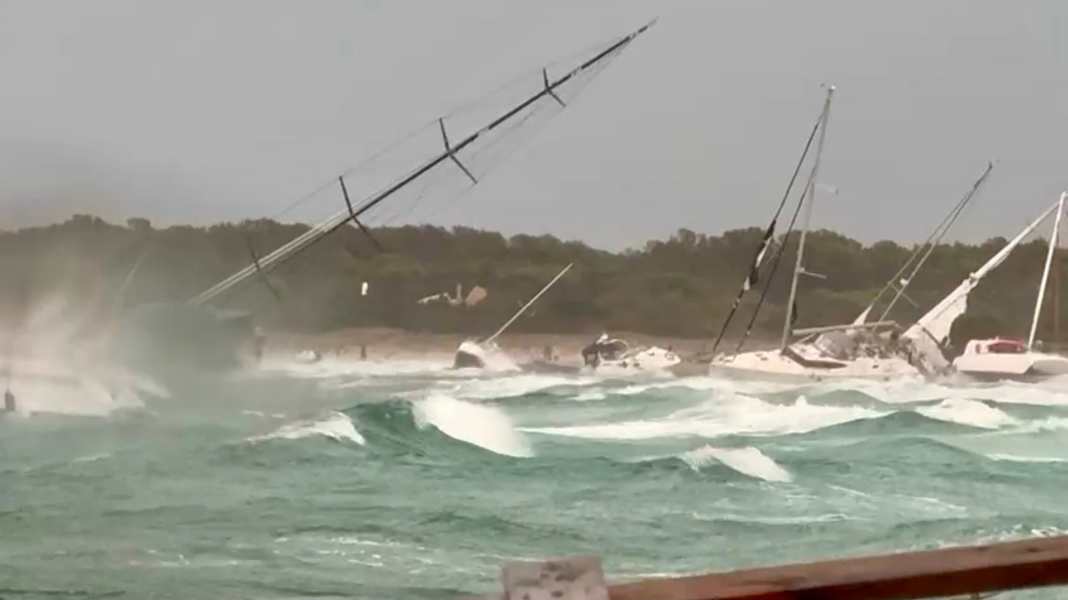
A storm front moving across the Balearic Islands from the Spanish mainland hit anchored yachts on the west side of Formentera at midday on Wednesday, stranding some of them in 50-knot gusts and breaking waves. Most of the crews had anchored in the popular bathing bay north of Savina. In many Videos you can see how the yachts end up on the beach with some of their sails torn to pieces. There is said to have been one serious injury, but no fatalities. Fishermen who capsized in the storm had to be rescued by helicopter.
The thunderstorm is part of a phenomenon known in Spain as "Gota Fria", or DANA, which describes a cold air intrusion over the upper atmosphere. Very cold and extremely strong winds from the higher layers of air then reach the surface and meet very warm, humid layers of air from the summer Mediterranean, which can lead to strong thunderstorms and winds, as well as torrential rain. The storm off Formentera probably only lasted just under an hour, but during this time more than a dozen sailing and motor boats were stranded. More than 40 flights were cancelled at the airport in Palma.
Many skippers ignored weather forecasts
The Mallorca expert from our sister magazine YACHT, Martin Muth, author of the Balearic Islands sailing guide "Portbook", was on Mallorca during the storm and describes how he experienced the storm:
"The Spanish weather service had previously issued explicit warnings of possible heavy thunderstorms, and the black front was clearly seen approaching the Balearic Islands from the west from the Spanish mainland. Anyone anchoring on the west side of Formentera in such conditions and not keeping a close eye on the weather will be caught by the wind and swell in Legerwall."
Dramatic videos show the extreme storm on the Balearic Islands
He is surprised that so many boats were still on site given the forecast and the clearly deteriorating weather. The risk on the west side is high in storms from the west, and the diversions around the narrow, sandy northern tip to the east side of the island, where you are then covered by land, is quickly made, it is only just over 4 miles. If the anchor slips there, you would simply drift off into deeper water. "50 knots is certainly not nice on the high seas, but it's better than anchoring in a bay on Legerwall," says Martin Muth.
In the Videos It can also be seen that many crews were poorly prepared, mainsails were still lying unsecured on the main booms, dinghies were still hanging with lines from the sterns of the boats and whirling through the air, unsecured furling genoas unwound on some yachts in the gusts.
Stranded luxury yacht was to be sold for 3.9 million euros
"The problem with such sudden strong winds and rapidly building swells that catch you at anchor is that you can't get the anchor up quickly enough due to the wind pressure and drive out of the bay. Once the iron slips, it can all happen very quickly," says Muth. This is exactly what seems to have happened in the bay.
The most prominent victim was the 30-metre luxury yacht "Wally Love", which was also washed up on the beach; its owner had just offered it for sale on brokerage portals on the internet for 3.9 million euros. But many charter yachts can also be seen in the videos circulating on social media. One cat sank on the rocks under the coast, two landed high on the sandy beach. Two years ago, an even stronger storm also hit Corsica in August.
